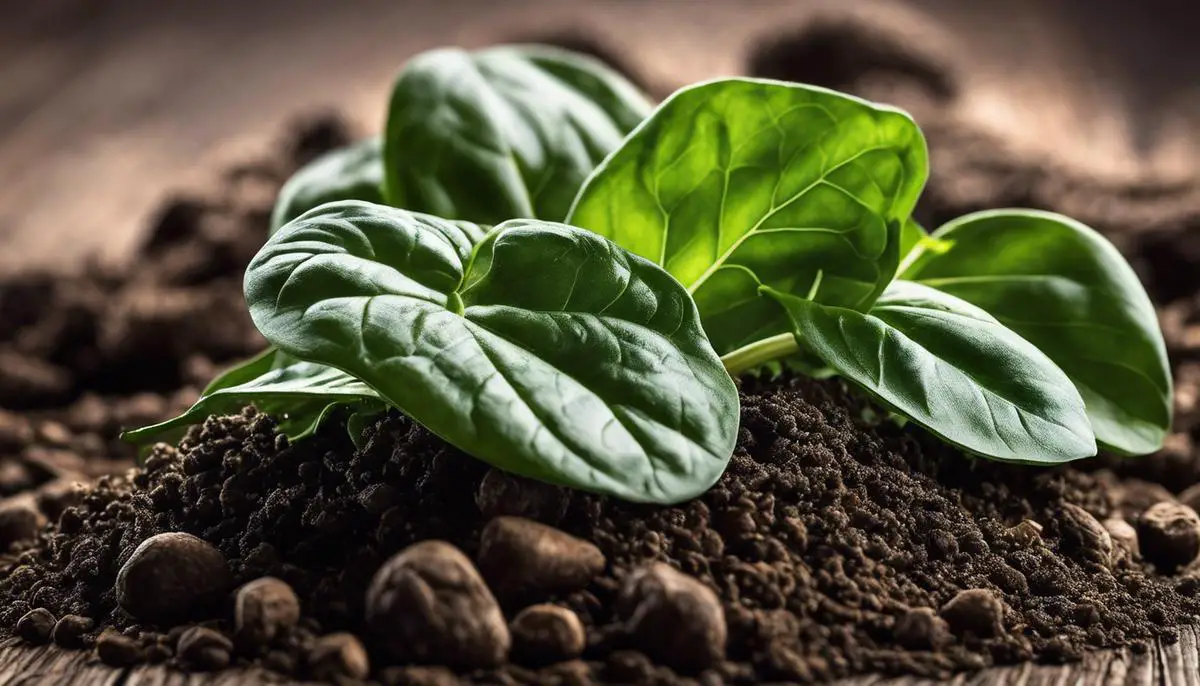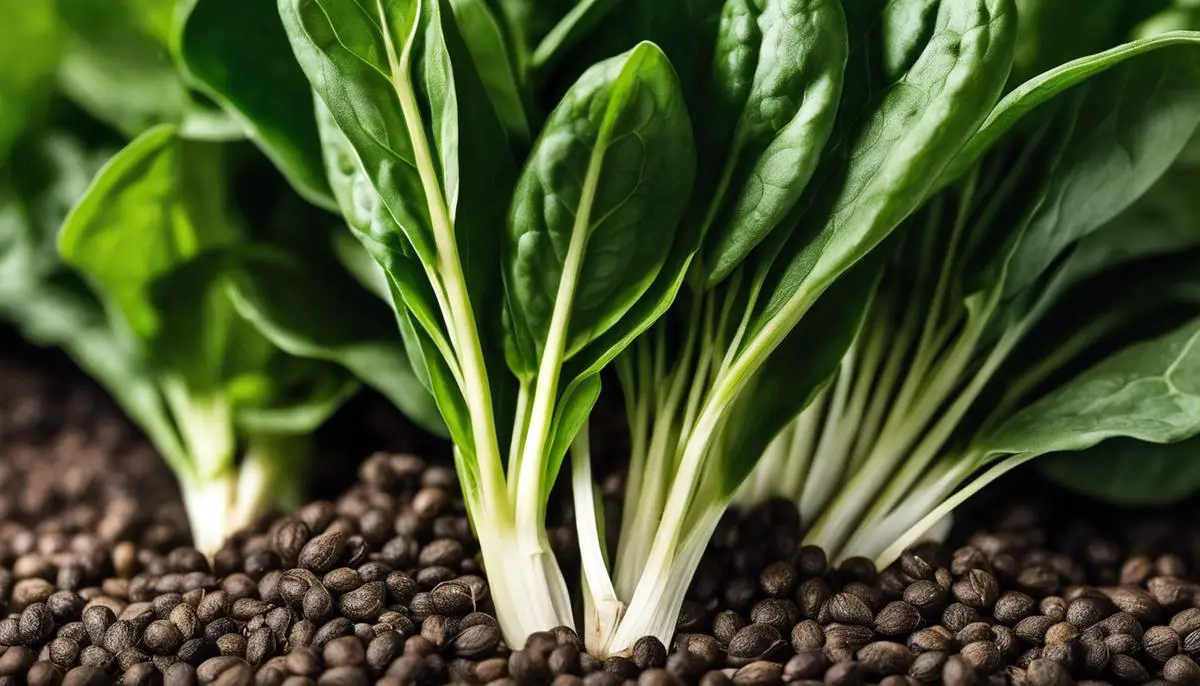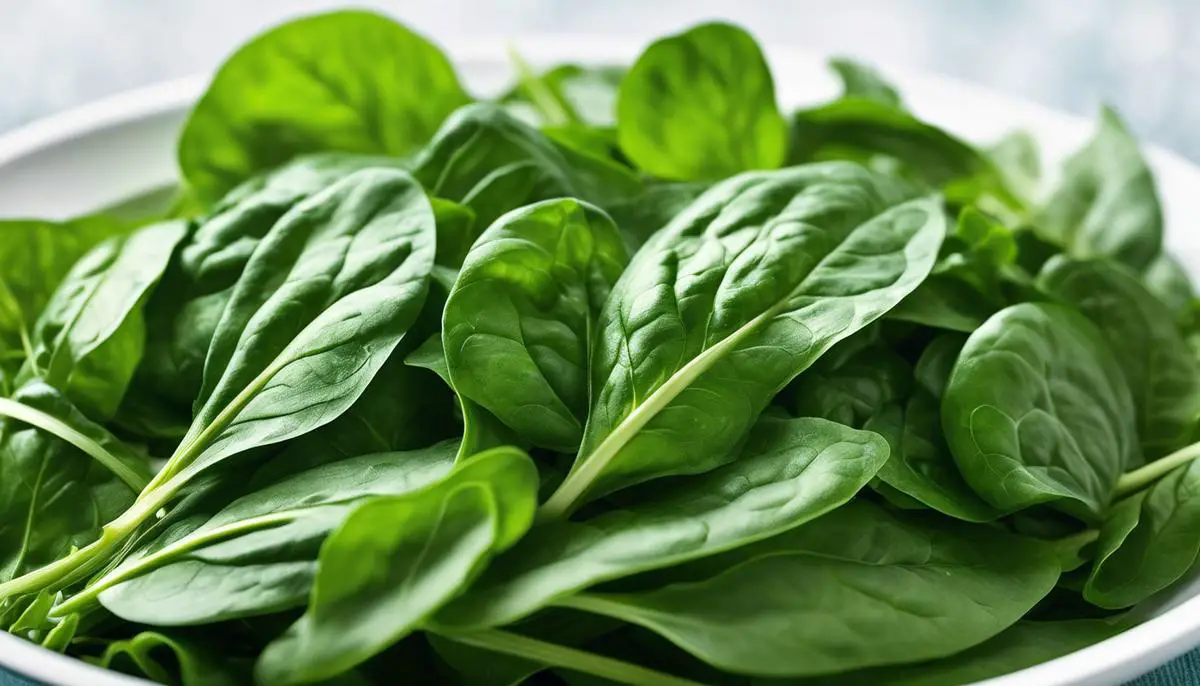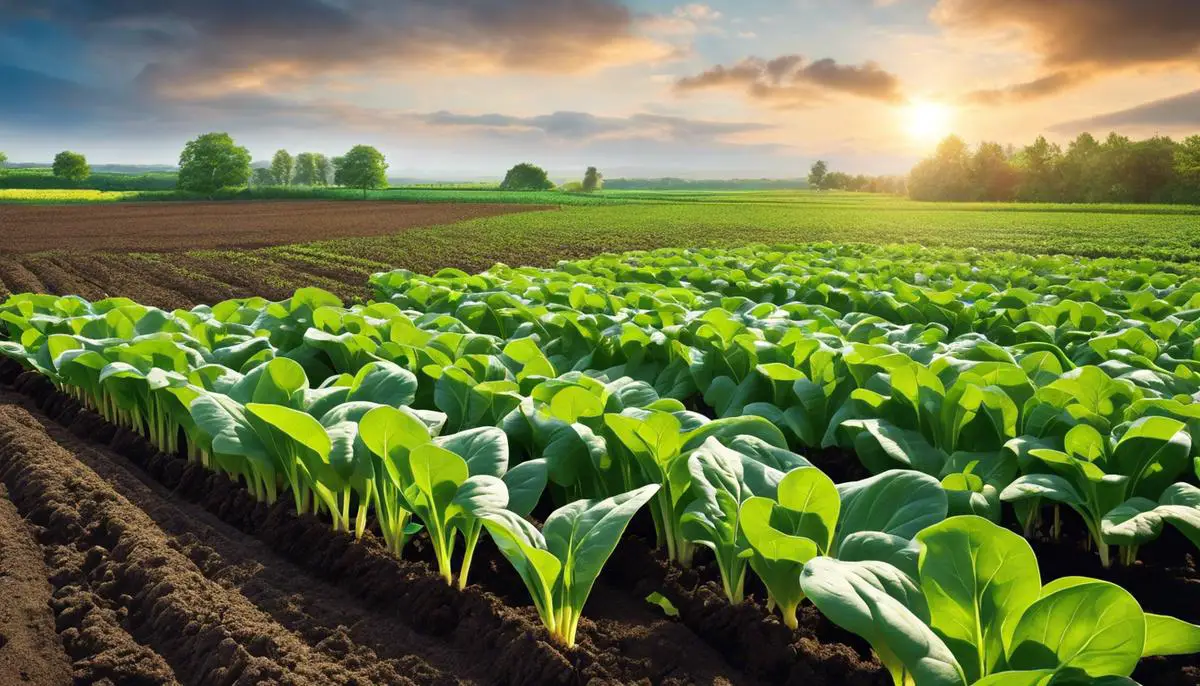Spinach, with its vibrant green color and nutrient-rich leaves, is a favorite among gardeners and health enthusiasts alike. But the journey from a small seed to mature, leafy greens can be filled with challenges. This journey is made easier by understanding the factors that contribute to healthy and abundant spinach growth. Two of these key factors include knowing the features of fertile, well-draining soil and discerning the ideal planting time and technique. Moreover, learning efficient care and harvesting practices is essential to lead your spinach plants to their optimum yields.
Understanding Soil Quality
Spinach, that leafy green powerhouse, captures the heart of many gardening enthusiasts due its myriad health benefits and its fairly easy growing process. Ensuring the right soil type for your spinach is fundamental to achieving a bountiful yield. So, what kind of soil is best for spinach growth? Prepare for a deep dive into Spinacia oleracea and its soil preferences!
Reader Poll: What online courses would interest you?
Key to the growth of any plant is the loil in which it’s planted. Spinach prefers a well-draining soil, rich in organic matter. The optimum pH for growth, that sweet spot spinach yearns for, lies between 6.0 and 7.0. In case that pH value sounds Greek to you, 7.0 is considered neutral on the pH scale. So, spinach savors a slightly acid to neutral soil range.
A soil rich in organic matter isn’t the same as simply dumping a bag of compost into the ground and hoping for the best. Think rich, think nutritious, think fertile. Typically, this would be a loamy or sandy soil type. These soils illustrate superior aeration and water retaining qualities, key for spinach to thrive.
Why is soil aeration important? It aids in root expansion, a necessity for plant growth. Water retention, on the other hand, ensures that water is saved for later use by the plant when needed. These two properties combine to provide a healthy, hospitable environment for your spinach to grow.
Subscribe to our newsletter!
Now, how can such a soil be achieved? Compost, compost, compost. Add a good amount of organic compost or well-rotted manure to the soil before planting. These organic supplements provide vital nutrients to the spinach. They also increase the soil’s water holding capacity and improve its structure, making the soil hospitable for those spinach plants.
That said, be wary of waterlogging. Even though spinach loves moisture, too much of a good thing can lead to disaster. Over watering and poor drainage can lead to root rot or cause your spinach plants to bolt, that is, to prematurely produce seeds and stop growing.
Finally remember, some soils might need a bit more than just organic matter. A soil test is an excellent way to determine the specific needs of your soil. If the test reveals your soil is too acidic (a pH below 6), you might need to add some garden lime to increase the pH. If it’s overly alkaline (above 7), add some soil sulfur to bring it down to spinach’s favorite spot.
So, the path to growing lush, nutritious spinach lies in ensuring your soil is loamy or sandy, has a neutral pH, is rich in organic matter and is well-drained. Happy growing!

Optimal Planting Times and Techniques
When Is The Best Time To Plant Spinach Seeds?
In keeping with the cultivation requirements of spinach, planting time can make or break your gardening efforts. It’s a cool-weather plant, so you should aim to plant in spring or fall.
Spring planting should be as soon as the soil temperature reaches 40 degrees Fahrenheit. Some gardeners use the blooming forsythia as a cue – when these golden wonders start showing their blooms, it’s time to sow spinach. If you’re aiming for a fall harvest, try sowing seeds 6-8 weeks before the first fall frost.
Now let’s dive into the best practices for Planting Spinach Seeds!
First of all, getting the planting depth and spacing right is crucial. Plant seeds about half an inch deep, and allow about 2 inches between seeds. Rows, if you’re planting more than one, should be 12-18 inches apart. This distance caters to the growing plants’ need for space and reduces competition for nutrients and light.
Follow the soil preparation steps mentioned in our earlier guide (about soil type, pH, aeration, and water retention) to ensure your spinach has the right environment to thrive. Remember, moisture is pivotal for spinach seeds, so make sure to maintain consistency in watering.
In terms of germination, patience is essential. Spinach seeds can take anywhere from 5 to 14 days to sprout, depending on the soil temperature. Remember that spinach loves a cool environment, so in warmer climates, you might want to provide some shade cloth to keep them cool and happy.
When your spinach seedlings have at least two true leaves, it’s time to thin them out. Remove extra plants to provide about 4 inches of space between each spinach plant. This step is crucial because overcrowded plants tend to be smaller and may be more susceptible to diseases.
Spinach can be a little tricky. It might take a couple of seasons (and some trial and error) to perfect your sowing technique. However, with time, attention, and the experience that comes with gardening, you’re bound to have a bountiful spinach harvest. Rest assured, the reward of freshly picked leaves, rich in nourishment and taste, is worth the effort!

Care and Harvesting of Spinach
Moving beyond the basics touched on, let’s delve deeper into the essential care spinach needs to thrive and yield a plentiful harvest. This includes nutrient management, pest control, and the right way to harvest.
Understanding the required nutrients is integral to the successful growth of any plant, and spinach is no different. While it has already been incorporated, through organic compost and well-rotted manure, the spinach plant will still benefit from additional feedings. A balanced liquid fertilizer, applied every two weeks, can provide the necessary nutrients to supplement established soil.
The spinach plant can be somewhat prone to pests and diseases, such as aphids and downy mildew. To prevent aphid infestations, consider introducing beneficial insects like ladybugs and lacewings to the spinach garden. These feed on the aphids, controlling their population naturally. If a mildew problem arises, consider an organic fungicide to treat the plant leaves. Always remember that healthy plants are more resistant to pests and diseases, so consistent care is the best preventative measure.
Furthermore, the practice of crop rotation should not be overlooked. Rotating crops aids in disrupting pest life cycles, enhances soil health, and reduces the chance of plant diseases. Try to avoid planting spinach where other leafy greens have been grown in the past two years.
Now, as for harvesting, spinach leaves can be picked as soon as they are large enough to eat. Start by picking the older, outer leaves first, as this will allow the younger, inner leaves more time to develop. Frequent harvesting of leaves stimulates the plant to keep producing more, extending the harvest period. Always use a clean and sharp knife or scissors to cut the leaves to prevent any plant damage. It is also advisable to harvest early in the morning, when leaves are at their peak freshness, for the optimum eating experience.
Caring for spinach plants is a rewarding journey. With the right knowledge and practices, anyone can cultivate a thriving spinach patch and enjoy the satisfaction of a healthy, home-grown harvest. There’s a joy in biting into fresh spinach, grown with your own care and dedication, that makes all the effort truly worthwhile. Happy gardening!

By understanding your soil quality, forging suitable strategies in planting, and maintaining a healthy environment for spinach, you have taken the initial steps toward a productive spinach garden. Additionally, understanding the signs that depict when your spinach crop is mature and ready for harvest will ensure your hard work pays off with delicious, nutrient-filled greens. Growing spinach can be a rewarding hobby as well as a source of nutrition. With commitment, patience, and the application of these tips, you’ll be well on your way to becoming a successful spinach grower.

